Introduction
How is the Sundarbans Formed: The Sundarbans, a UNESCO World Heritage site, is a sprawling deltaic region that straddles the border between India and Bangladesh. Renowned for its vast mangrove forests, unique biodiversity, and intricate network of waterways, the Sundarbans is a fascinating natural wonder. Understanding how the Sundarbans were formed involves delving into a complex interplay of geological, hydrological, and ecological processes that have evolved over millennia. In this extended blog, we will explore the formation of the Sundarbans, its significance, and the unique experiences offered by Royal Sundarban Tourism to explore this remarkable region. We can see more details about “How is the Sundarbans Formed” in this blog.

Geological Formation
The Deltaic Process
The Sundarbans is part of the world’s largest delta, the Ganges-Brahmaputra-Meghna (GBM) Delta. This delta has been formed by the deposition of sediments carried by the Ganges, Brahmaputra, and Meghna rivers over thousands of years. The process of delta formation involves the following key stages:
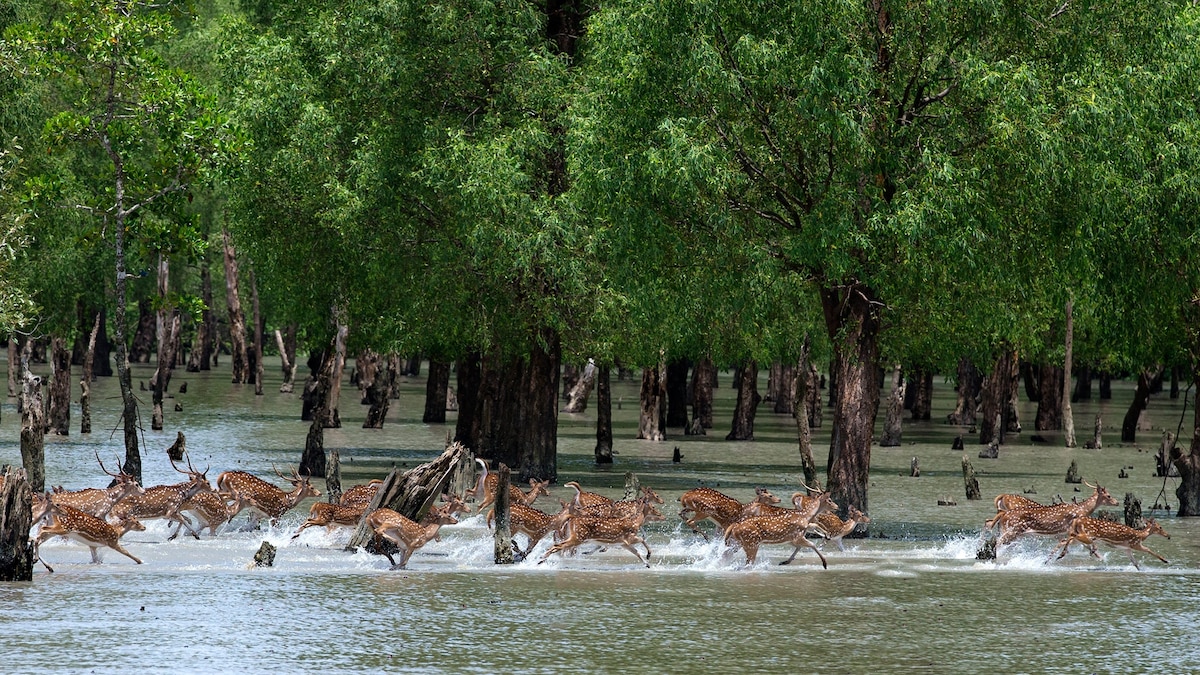
- Sediment Transport: The rivers carry vast amounts of sediment from the Himalayan mountains and the surrounding regions.
- Deposition: As these rivers reach the Bay of Bengal, their velocity decreases, causing the sediments to settle and form land.
- Delta Growth: Over time, the continuous deposition of sediments leads to the formation of new land, expanding the delta further into the sea.
Tectonic Activity
The GBM Delta is situated in a tectonically active region, where the Indian Plate is colliding with the Eurasian Plate. This tectonic activity has influenced the topography and geology of the Sundarbans. Periodic uplifts and subsidence of the land, along with the shifting of river courses, have played a crucial role in shaping the delta’s landscape. Also, you can Book the Sundarban Tour At Maity Tourism and Sundarban Leisure Tourism Powered By Argusdna. You can see more details about “How is the Sundarbans Formed” in this blog.
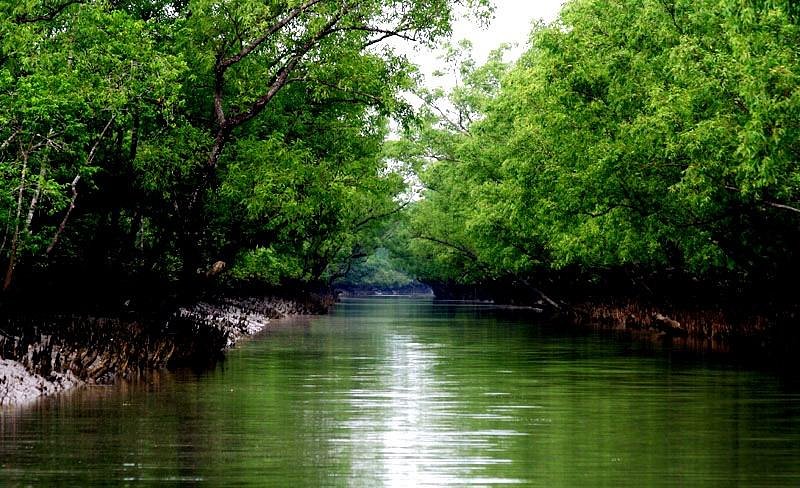
Sea Level Changes
Sea level changes over geological time scales have also impacted the formation of the Sundarbans. During periods of lower sea levels, more land was exposed, allowing for greater sediment deposition. Conversely, higher sea levels have led to the inundation of coastal areas, creating the intricate network of tidal waterways and estuaries characteristic of the Sundarbans. We can find more details about “How is the Sundarbans Formed” in this blog.
Read More:
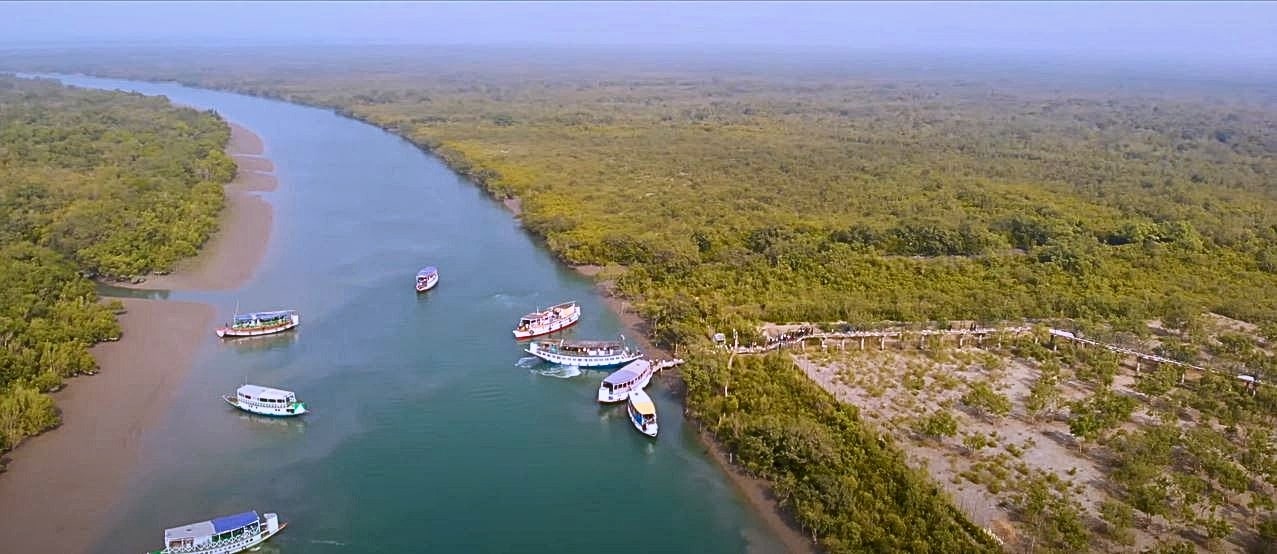
Hydrological Processes
Tidal Influence
The Sundarbans is a tidal forest, heavily influenced by the daily ebb and flow of the tides from the Bay of Bengal. The tidal action plays a crucial role in shaping the landscape, influencing sediment deposition, and maintaining the health of the mangrove ecosystems. The tides create a dynamic environment, constantly reshaping the land and waterways.
River Dynamics
The three major rivers, Ganges, Brahmaputra, and Meghna, along with their numerous distributaries, continuously transport fresh water and sediments into the Sundarbans. The interplay between riverine flow and tidal action creates a complex hydrological system, essential for the sustenance of the mangrove forests and the diverse wildlife.
Salinity Gradient
The salinity levels in the Sundarbans vary significantly due to the mixing of fresh river water with saline seawater. This gradient in salinity creates distinct ecological zones, each supporting different species of flora and fauna. The mangroves, in particular, are well-adapted to thrive in these brackish conditions.
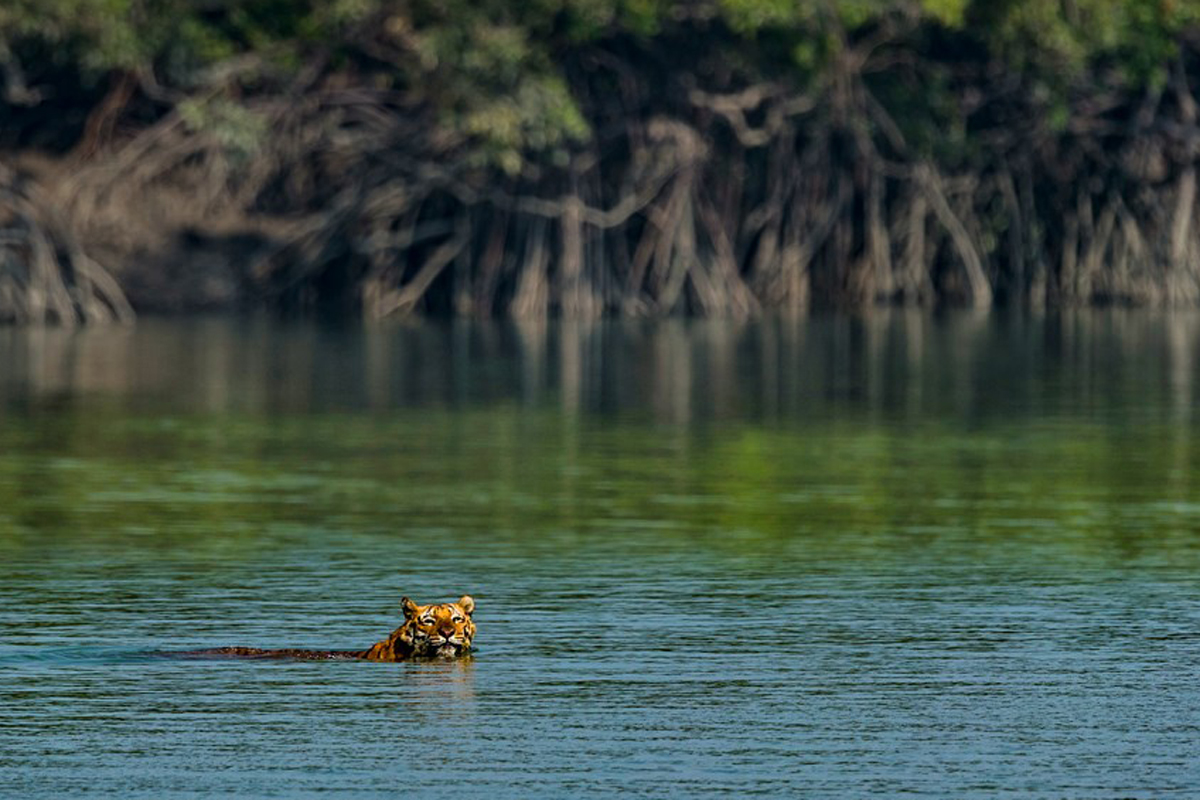
Ecological Significance
Mangrove Forests
The Sundarbans boasts the largest contiguous mangrove forest in the world. These mangroves are adapted to survive in the harsh, saline environment and play a vital role in protecting the coastline from erosion, storm surges, and cyclones. The intricate root systems of the mangroves trap sediments, stabilize the soil and provide a habitat for numerous marine organisms. We can discover more details about “How is the Sundarbans Formed” in this blog.

Biodiversity Hotspot
The Sundarbans is a biodiversity hotspot, home to a myriad of species, including the iconic Royal Bengal Tiger, estuarine crocodiles, spotted deer, and a variety of bird species. The rich biodiversity is a result of the unique ecological conditions created by the interplay of freshwater and saltwater, tidal influences, and the diverse habitats provided by the mangrove forests.
Carbon Sequestration
Mangrove forests are highly effective at sequestering carbon dioxide from the atmosphere. The dense vegetation and the organic-rich sediments in the Sundarbans act as significant carbon sinks, helping to mitigate climate change. Protecting and preserving these mangroves is crucial for maintaining their role in global carbon cycles.

Human Interaction
Indigenous Communities
The Sundarbans have been inhabited by indigenous communities for centuries. These communities have developed a deep understanding of the local ecology and rely on the mangrove forests for their livelihoods. Fishing, honey collection, and traditional agriculture are some of the primary activities of these communities. Their sustainable practices have helped maintain the delicate balance of the ecosystem.
Conservation Efforts
Conservation efforts in the Sundarbans are critical to preserving its unique biodiversity and ecological functions. Both India and Bangladesh have established protected areas and implemented measures to safeguard the mangrove forests and wildlife. Organizations like the Royal Sundarban Tourism play a vital role in promoting sustainable tourism, raising awareness, and supporting conservation initiatives. We can see and check more details about “How is the Sundarbans Formed” in this blog.

Challenges and Threats
Despite its ecological significance, the Sundarbans face numerous threats, including climate change, sea-level rise, habitat degradation, and human encroachment. Addressing these challenges requires collaborative efforts from governments, conservation organizations, and local communities to ensure the long-term sustainability of the Sundarbans.
Exploring the Sundarbans with Royal Sundarban Tourism
Unique Tour Packages
Royal Sundarban Tourism offers a range of unique tour packages that allow visitors to explore the wonders of the Sundarbans. These packages are designed to provide an immersive experience, combining wildlife sightings, cultural interactions, and educational insights into the formation and significance of the Sundarbans.
Experienced Guides
The success of any tour depends on the expertise of the guides. Royal Sundarban Tourism employs experienced and knowledgeable guides who are well-versed in the local ecology, wildlife behaviour, and cultural heritage. These guides enhance the tour experience by sharing fascinating information and ensuring the safety and comfort of the guests.
Sustainable Practices
Royal Sundarban Tourism is committed to sustainable and responsible tourism practices. Their tours are designed to minimize the ecological footprint, support local communities, and contribute to conservation efforts. By choosing Royal Sundarban Tourism, travellers can be assured that their adventure is contributing positively to the preservation of the Sundarbans. We can like more details about “How is the Sundarbans Formed” in this blog.
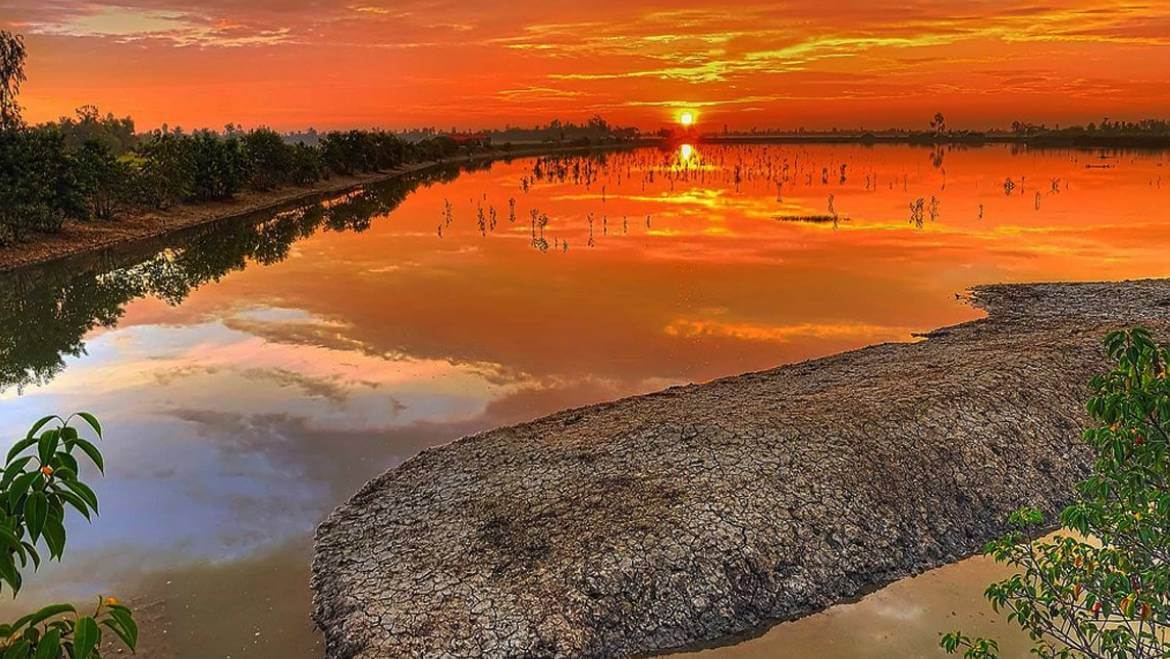
Comfortable Accommodations
After a day of exploration, guests can retreat to comfortable accommodations provided by Royal Sundarban Tourism. These accommodations blend seamlessly with the natural surroundings, offering a tranquil and immersive experience. Guests can enjoy modern amenities while being close to nature.
Culinary Delights
A key highlight of the Sundarban tour experience is the opportunity to savour the delicious local cuisine. Meals prepared by skilled chefs feature fresh, locally sourced ingredients and showcase the rich culinary traditions of the Sundarbans region. From delectable seafood dishes to flavorful vegetarian options, the dining experience adds another layer of enjoyment to the tour adventure.
Frequently Asked Questions (FAQ)
1. How was the Sundarbans formed?
The Sundarbans were formed through the deposition of sediments carried by the Ganges, Brahmaputra, and Meghna rivers over thousands of years. Tectonic activity, sea level changes, and tidal influences have also played significant roles in shaping the deltaic region.
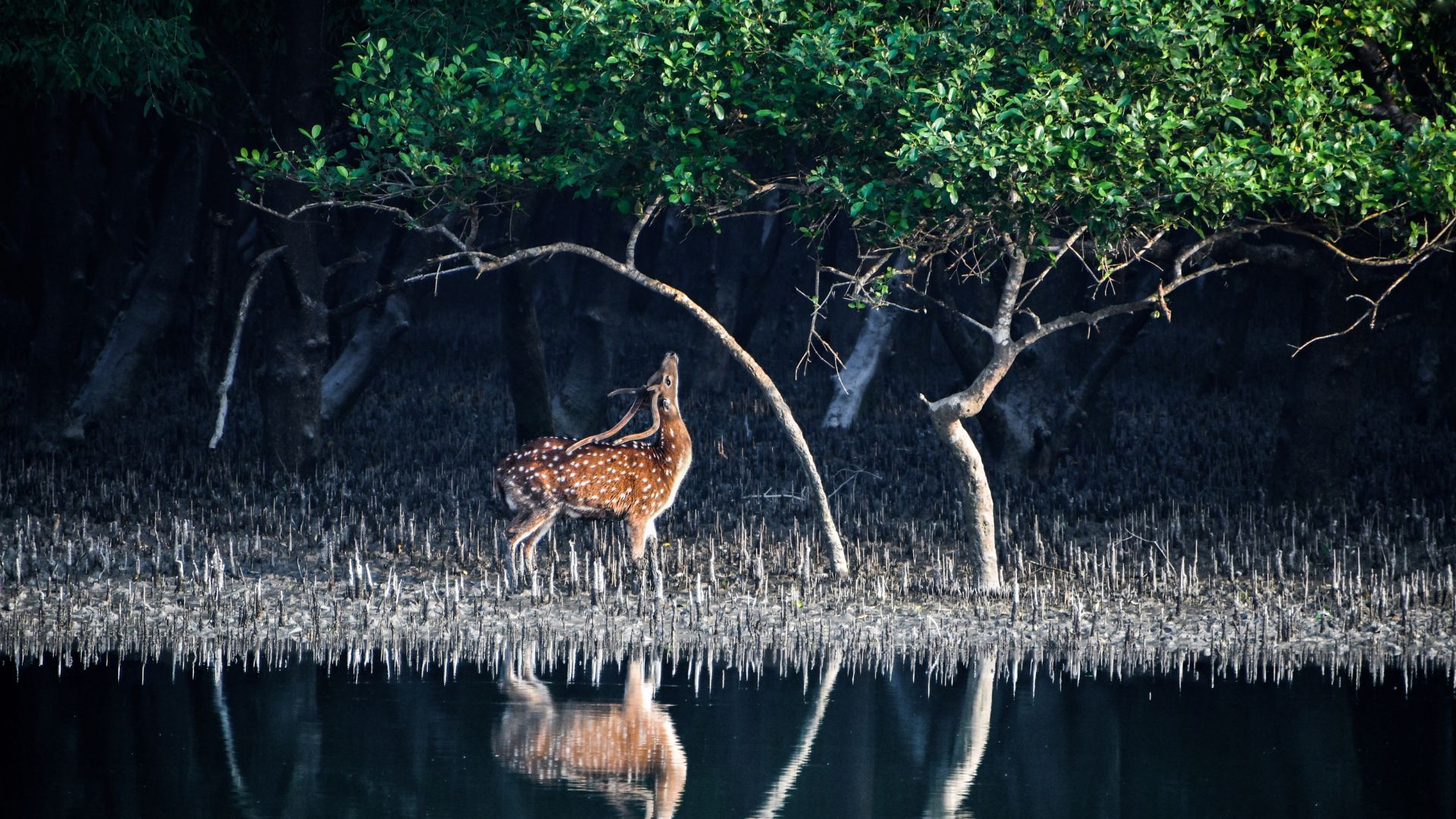
2. Why are the mangroves important in the Sundarbans?
Mangroves are crucial for protecting the coastline from erosion, storm surges, and cyclones. They provide habitat for numerous marine organisms, support rich biodiversity, and act as significant carbon sinks, helping to mitigate climate change.
3. What wildlife can be found in the Sundarbans?
The Sundarbans is home to a diverse range of wildlife, including the Royal Bengal Tiger, estuarine crocodiles, spotted deer, wild boars, and various bird species. The unique ecological conditions support this rich biodiversity.
4. How do local communities interact with the Sundarbans?
Indigenous communities in the Sundarbans rely on the mangrove forests for their livelihoods. Fishing, honey collection, and traditional agriculture are some of the primary activities. These communities have developed sustainable practices that help maintain the balance of the ecosystem. We can see more facts about “How is the Sundarbans Formed” in this blog.
5. What are the major threats to the Sundarbans?
The Sundarbans face threats from climate change, sea-level rise, habitat degradation, and human encroachment. Addressing these challenges requires collaborative conservation efforts and sustainable practices.

6. How can I book a tour with Royal Sundarban Tourism?
To book a tour with Royal Sundarban Tourism, visit their website to explore the available packages and itineraries. You can book directly online or contact their customer support team for personalized assistance and to answer any specific questions you may have.
7. What should I pack for a Sundarban tour?
When packing for a Sundarban tour, consider essentials such as light, breathable clothing, comfortable walking shoes, a wide-brimmed hat, sunglasses, sunscreen, insect repellent, binoculars, a camera, a reusable water bottle, and any necessary medications.
8. Are the tours offered by Royal Sundarban Tourism safe?
Yes, the tours offered by Royal Sundarban Tourism are safe when conducted with experienced guides and following safety measures. The guides provide instructions and guidelines to ensure a safe and enjoyable experience.
9. Can children participate in Sundarban tours?
Yes, children can participate in Sundarban tours. Royal Sundarban Tourism offers family-friendly tour options and accommodations to ensure that all members of the family can enjoy the adventure.
10. How does Royal Sundarban Tourism support conservation efforts?
Royal Sundarban Tourism supports conservation efforts by promoting sustainable tourism practices, employing local guides, sourcing supplies from local vendors, and contributing to community development projects. A portion of the tour fees is often allocated to conservation initiatives.
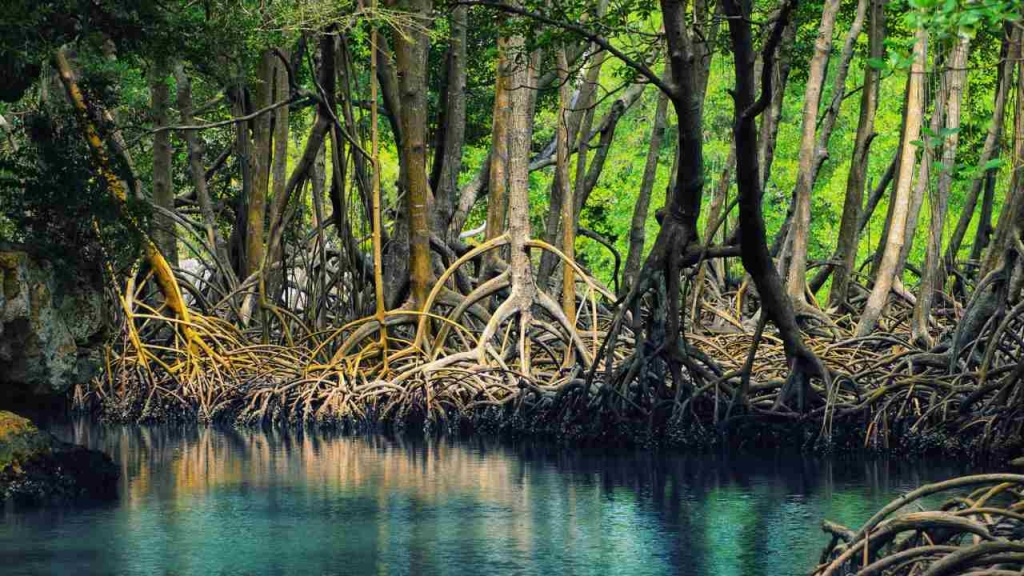
How is the Sundarbans Formed Conclusion
The Sundarbans, with its unique formation, rich biodiversity, and cultural significance, stand as one of the world’s most remarkable natural wonders. Exploring this intricate deltaic region with Royal Sundarban Tourism offers an unparalleled opportunity to connect with nature, witness incredible wildlife, and understand the delicate balance that sustains this ecosystem.
We have Sundarban Tour Packages every day
For Booking Of Best Sundarban Package( Starting from 2799/-)
Name: Dilip MAity
Organization: Royal Sundarban Tourism
Organizations Web link: https://royalsundarbantourism.com/
Contact: +91 7439965413 / +91 8584838109
Gpay / Phone pay : 9804049535
Email: info@royalsundarbantourism.com
Address: Tiger More, Gosaba, Pakhiralay, Pakhiralay Main road, District- 24 Parganas South, West Bengal 743370
Royal Sundarban Tourism: Crafting Unforgettable Adventures
Royal Sundarban Tourism excels in providing expertly curated tours that prioritize sustainability, community engagement, and exceptional guest experiences. Their commitment to preserving the Sundarbans while offering immersive and educational adventures makes them the preferred choice for travellers seeking to explore this extraordinary region. We can check and find more details about “How is the Sundarbans Formed” in this blog.
Read Again: Great Blog How Sundarban Delta Form?

